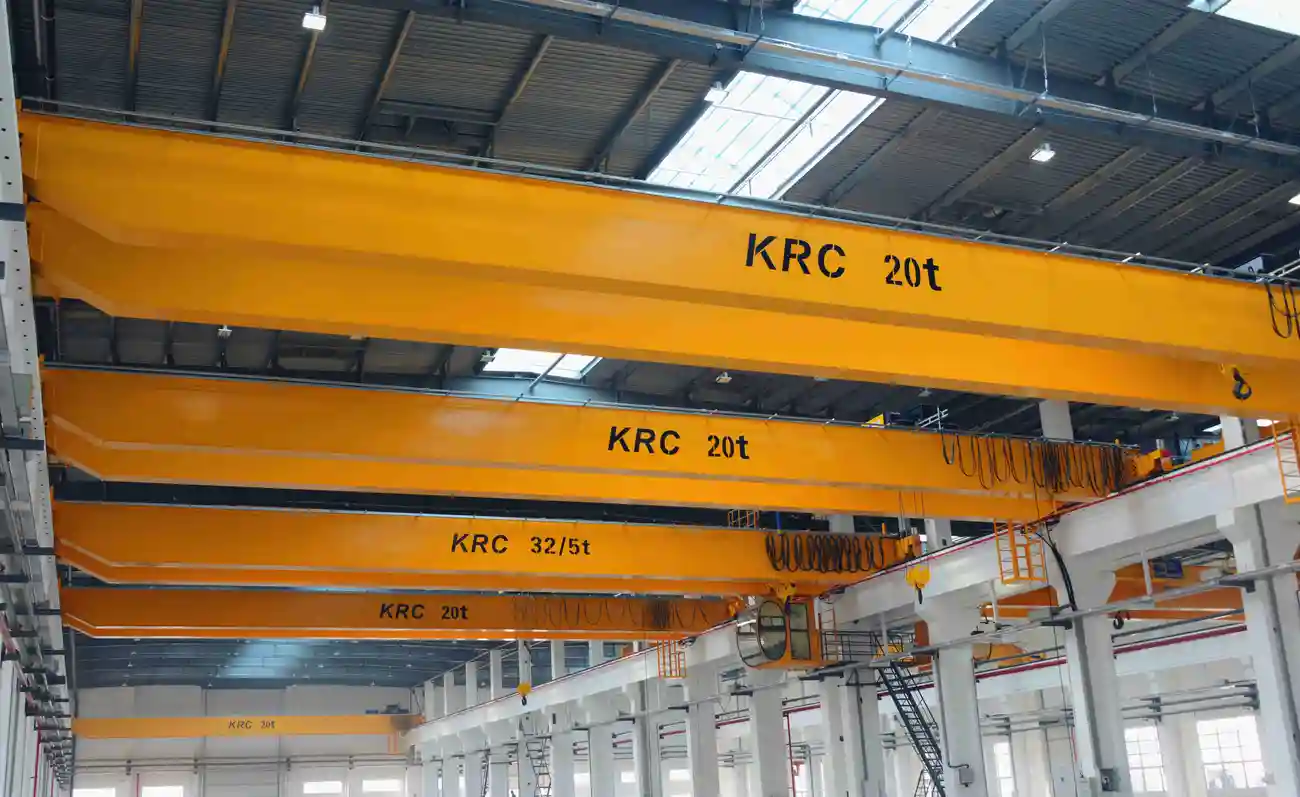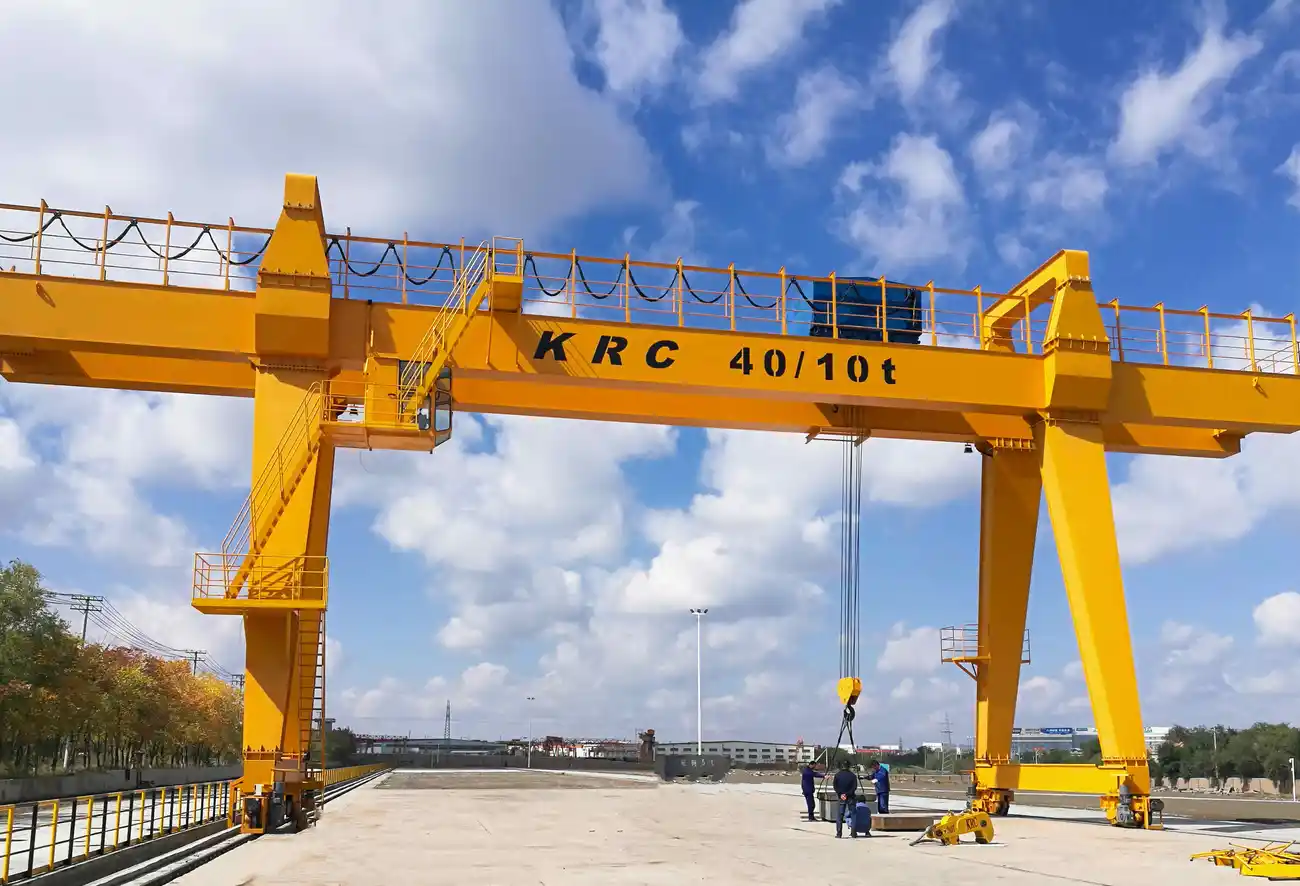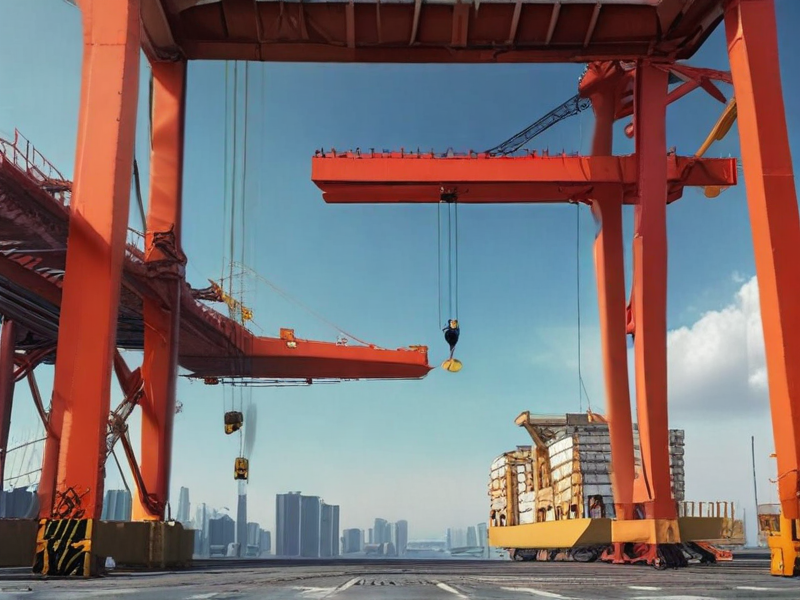An In-Depth Analysis of Manufacturing Expenses for Gantry Crane Cost
Manufacturing expenses for gantry cranes involve several key components, including materials, labor, overhead, and auxiliary costs. Material costs are the most substantial, primarily encompassing high-strength steel for beams, supports, and trolleys. Additional materials include electrical components for control systems, motors, and wiring, as well as safety features like limit switches and bumpers.
Labor costs are the next significant contribution to manufacturing expenses. Skilled labor is essential for precision welding, assembly, and electrical work. Additionally, design and engineering teams are necessary to develop customized solutions tailored to specific operational needs. Labor costs can vary significantly based on the region and level of expertise required.
Overhead costs incorporate factory operations, such as utilities, equipment depreciation, lease or property expenses, and administrative functions. Overhead is often allocated based on direct labor hours or machine hours. Advanced manufacturing techniques, such as CNC machining and robotic welding, can mitigate some labor costs but increase the initial capital investment and depreciation expenses.
Auxiliary costs include quality assurance, compliance with industry standards, and testing. Gantry cranes must meet stringent safety and performance standards set by regulatory bodies, which necessitates rigorous testing and documentation. Additionally, shipping and logistics costs for transporting large components or the finished crane to the site add to the total expense.
In summary, the manufacturing expenses for gantry cranes are driven by material costs, skilled labor, overhead, and auxiliary expenses. Efficient resource management, technological advancements, and economies of scale are critical in optimizing these costs while ensuring high-quality and reliable crane systems.

Understanding the Components that Contribute to the Price of Gantry Crane Cost
Gantry crane costs are influenced by various components, each playing a crucial role in the final price. Understanding these components helps in making informed purchasing decisions.
1. Type and Design: The type of gantry crane, whether single or double girder, full or semi-gantry, and portable or fixed, significantly impacts cost. Complex designs and advanced configurations typically cost more due to the engineering and material expenses.
2. Capacity and Size: The crane’s load-bearing capacity and size directly affect its price. Heavier and larger cranes require more robust materials and engineering, thereby increasing costs.
3. Materials Used: The quality and type of materials, such as high-grade steel or specialized alloys, contribute significantly to the overall price. Durable and high-strength materials lead to higher costs but ensure longevity and reliability.
4. Components and Features: Advanced features like automated controls, enhanced safety systems, and custom attachments can drive up the price. Essential components like the hoist, trolley, and wheels also add to the cost, depending on their quality and specifications.
5. Manufacturing and Labor Costs: The cost of production varies with the manufacturer’s location, labor costs, and production efficiency. Regions with higher labor costs or specialized manufacturing capabilities tend to have higher crane prices.
6. Transportation and Installation: The logistics of transporting and installing a gantry crane can be substantial, especially for larger models. These costs include freight charges, site preparation, and assembly.
7. Maintenance and Warranty: Offering extended warranties or maintenance contracts can increase the initial price but provide long-term value and peace of mind.
8. Customization Requirements: Custom-built cranes tailored to specific industrial needs or environments will be more expensive due to the additional design, engineering, and manufacturing efforts involved.
By carefully considering these components, buyers can better evaluate the overall cost, ensuring that their investment aligns with their operational requirements and budget constraints.
Comparing the Wholesale and Retail Prices of Gantry Crane Cost in China
Gantry cranes are indispensable tools in various industries, particularly in shipping, construction, and heavy manufacturing. In China, the cost of gantry cranes can vary significantly between wholesale and retail markets, reflecting differences in volume, customization, and buyer-seller relationships.
Wholesale Prices:
Wholesale prices for gantry cranes in China are generally lower due to bulk purchasing. Manufacturers offer significant discounts to buyers who order in large quantities, as this reduces per-unit costs through economies of scale. On average, a standard single-beam gantry crane might cost between $10,000 to $30,000 wholesale. Factors such as capacity (typically ranging from 5 to 100 tons), materials, and additional features like remote control or automation can influence the price. Large-scale buyers, such as construction companies or industrial firms, prefer wholesale purchases for cost efficiency.
Retail Prices:
Retail prices are notably higher due to several factors, including smaller order sizes, the inclusion of middlemen, and additional value-added services like installation and after-sales support. A similar single-beam gantry crane could retail from $20,000 to $45,000. Retail sellers often cater to smaller businesses or individual clients who require customization or personalized services. The higher price reflects the added business costs such as marketing, warranty, and administrative expenses.
Conclusion:
While wholesale prices are more economical for large purchasers, retail prices offer the advantage of lower quantities and additional services, crucial for smaller buyers. Buyers must consider their specific needs, including budget constraints and service requirements, to determine the best purchasing route.

Understanding Shipping and Logistics for Gantry Crane Cost from China
Shipping and logistics for importing a gantry crane from China involve several critical steps and cost factors that must be meticulously planned to ensure efficiency and cost-effectiveness. Here’s a concise overview:
1. Supplier Negotiation: Initial stages involve negotiating terms, specifications, and prices with the manufacturer. This step also includes understanding their production timelines and any potential delays.
2. Incoterms: Determine the Incoterms (International Commercial Terms) to clarify responsibilities between you and the supplier. Common terms include FOB (Free On Board), CIF (Cost, Insurance, Freight), and DDP (Delivered Duty Paid).
3. Documentation: Ensure all required documentation is prepared, including commercial invoices, packing lists, bills of lading, and certificates of origin. These documents are vital for customs clearance.
4. Freight Forwarding: A freight forwarder can streamline the logistics process, handling shipping arrangements, consolidations, and local logistics. They can also offer cost-effective shipping options through sea or air freight.
5. Customs Clearance: Prepare for customs duties and taxes, which vary by country. Efficient customs clearance ensures that the crane enters the destination country without unnecessary delays.
6. Shipping Costs: Consider all associated costs, including shipping rates (which can fluctuate based on the weight and dimensions of the crane), container fees, port handling charges, and inland transportation costs to the final destination.
7. Insurance: Cargo insurance is crucial to protect against potential losses or damages during transit.
8. Local Logistics: Arrange for transportation from the destination port to the final installation site, which may involve large trucks or specialized vehicles capable of carrying heavy machinery.
9. Installation and Setup: Finally, coordinate with local engineers and technicians for the setup and commissioning of the gantry crane to ensure it operates safely and efficiently.
In summary, comprehensive planning, choosing reliable service providers, and understanding all cost components are vital to successfully importing a gantry crane from China.
Potential Tariffs or Import Taxes on Gantry Crane Cost Purchased from China
When purchasing a gantry crane from China, several tariffs or import taxes may apply depending on the destination country. Below are some potential considerations:
United States
The United States has imposed various tariffs on Chinese goods. For industrial machinery like gantry cranes, tariffs can range from 7.5% to 25% under Section 301 of the Trade Act of 1974. Additionally, there may be import duties categorized under the Harmonized Tariff Schedule (HTS).
European Union
The EU has its own tariff system, classified under the Combined Nomenclature (CN). Import duties for machinery often hover around 1.7% to 4%. Anti-dumping duties could also apply if the EU deems the goods to be sold at unfairly low prices.
Canada
Canada imposes tariffs based on the Harmonized System (HS) codes. For gantry cranes, the general tariff rate is approximately 8%, but it can vary. Canada also has anti-dumping measures for specific instances.
Australia
Australia applies tariffs under the Australian Harmonized Export Commodity Classification (AHECC). The general duty rate for machinery is 5%, which may vary depending on bilateral trade agreements.
Additional Costs
1. Value Added Tax (VAT): Many countries impose VAT on imported goods. For example, it’s 20% in the UK and 19% in Germany.
2. Customs Clearance Fees: These are administrative fees charged during the customs clearance process.
3. Anti-Dumping Duties: These could apply if it’s determined the gantry crane is priced lower than fair market value.
4. Freight and Logistics Costs: Importing heavy machinery like gantry cranes can be expensive, affecting the overall cost.
Consulting a customs broker or trade compliance expert is advisable for precise tariff rates and regulatory requirements, ensuring all costs are accounted for.

Impact of Market Demand and Competitive Environment on Gantry Crane Cost
The cost of gantry cranes, essential for heavy lifting in ports, construction sites, and warehouses, is impacted significantly by market demand and the competitive environment.
Market Demand:
1. High Demand: When demand for gantry cranes surges, often driven by infrastructure development and industrial expansion, manufacturers may increase prices. High demand can reduce the availability of key materials like steel, contributing to cost escalations. Additionally, during economic booms, increased construction and port activities typically elevate demand, further inflating prices.
2. Low Demand: Conversely, during economic downturns or reduced industrial activity, demand for gantry cranes declines. Manufacturers may lower prices to stimulate sales and clear inventory, resulting in more competitive pricing.
Competitive Environment:
1. Market Entry: An increase in the number of manufacturers in the market elevates competition, putting downward pressure on prices. Companies may innovate and reduce costs to offer more attractive pricing, benefiting buyers.
2. Technological Advancements: Competition drives technological advancements. Superior, cost-effective technologies can reduce production costs, potentially lowering market prices.
3. Pricing Strategies: Intense competition may lead firms to adopt aggressive pricing strategies, including discounts and extended payment terms. However, if a few players dominate the market (oligopoly), they might easily control and maintain higher price levels through tacit agreements.
4. Global Competition: International competition, especially from regions with lower production costs like China and India, affects pricing dynamics globally. Importing economical cranes from these regions can make it challenging for local manufacturers to maintain higher prices.
In summary, the interplay of market demand and competitive factors critically shapes gantry crane costs. High demand and limited competition drive prices up, while low demand and intense competition can drive them down. Understanding these dynamics helps stakeholders make informed purchase and investment decisions.
FAQ about Gantry Crane Cost with Multiple Answers
FAQ About Gantry Crane Cost
Q1: What factors influence the cost of a gantry crane?
A1: The cost of a gantry crane is influenced by various factors, including:
– Capacity: Cranes with higher lifting capacities generally cost more.
– Span Length: Longer spans require more material and engineering, increasing costs.
– Height: Higher lifting heights need more robust structures and taller supports.
– Type: Single-girder cranes are less expensive than double-girder cranes.
– Material: Stainless steel options cost more than regular steel due to corrosion resistance.
– Customization: Any bespoke features or additional functionalities will add to the price.
– Installation: Complexity and location of installation can also affect overall cost.
– Brand and Manufacturer: Well-known brands may charge a premium for their reputation and reliability.
– Additional Features: Options like remote control, anti-sway technology, and specialized hooks can increase the price.
Q2: How much does a gantry crane typically cost?
A2: The cost can vary widely:
– Small Portable Gantry Cranes: Typically range from $1,000 to $5,000.
– Medium Capacity Fixed Cranes: Generally between $12,000 to $50,000.
– Large Custom Cranes: Can go from $100,000 to several million dollars depending on specifications.
Q3: Are there ongoing costs associated with gantry cranes?
A3: Yes, there are ongoing costs, including:
– Maintenance: Regular inspections and part replacements.
– Operational Training: For operators to ensure safety and efficiency.
– Energy Consumption: Power costs for electric cranes.
– Insurance: Higher premiums for more expensive equipment.
– Upgrades: Technology and regulatory compliance may require future updates.
Q4: Is it more cost-effective to rent or buy a gantry crane?
A4: This depends on:
– Usage Frequency: Renting is cost-effective for short-term or infrequent use.
– Budget: Buying involves a higher upfront cost, but renting can be more expensive over time.
– Tax Advantages: Ownership may provide benefits like depreciation, whereas rentals can often be written off as operational expenses.
Understanding these factors can help you make an informed decision about investing in a gantry crane.

